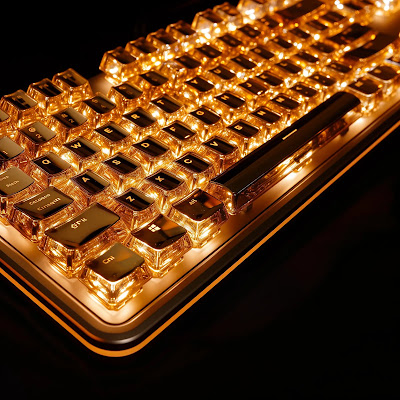Introduction
In the modern age of technology-driven work environments, where the majority of tasks are performed on computers, individuals spend prolonged hours typing and manoeuvring keyboards. However, this prolonged usage can lead to various musculoskeletal issues, including strain and discomfort. Ergonomic keyboards have emerged as a solution to alleviate such problems by providing a design that promotes natural hand positioning and reduces strain during prolonged use. This article explores the significance of ergonomic keyboards in preventing strain during long working hours, discussing their design principles, benefits, and practical considerations.
Understanding Ergonomics and Its Importance
Ergonomics is the science of designing products and environments to fit the people who use them, aiming to optimize efficiency, comfort, and safety. In the context of keyboards, ergonomic design focuses on reducing strain on the hands, wrists, and arms by promoting neutral postures and minimizing repetitive movements. This is crucial for individuals who spend extended periods typing, such as office workers, programmers, writers, and gamers.
 |
| Bluetooth Keyboard |
Common Issues Associated with Traditional Keyboards
Traditional keyboards, while ubiquitous, often contribute to musculoskeletal problems due to their flat, unyielding design. Continuous typing on conventional keyboards can lead to conditions like carpal tunnel syndrome, tendonitis, and general hand fatigue. The layout and angle of standard keyboards force users to bend their wrists at unnatural angles, increasing the risk of strain and injury over time.
 |
| Keyboard, Wireless Dual-Mode Keyboard |
Design Principles of Ergonomic Keyboards:
Ergonomic keyboards are specifically designed to address the limitations of traditional keyboards and promote a more natural hand position. Key design principles include:
1. Split Design: Ergonomic keyboards are often split into two separate sections, allowing users to position each hand independently. This helps maintain a straighter wrist position and reduces the strain caused by ulnar deviation.
 |
| Wireless Ergonomic Keyboard |
2. Tenting or Negative Slope: Some ergonomic keyboards feature tenting, which raises the centre of the keyboard, resembling a tent shape. This design reduces pronation of the wrists and encourages a more neutral hand posture. Alternatively, keyboards may have a negative slope, where the front is lower than the back, further minimizing wrist extension.
3. Curved Key Layout: Ergonomic keyboards may adopt a curved or contoured key layout, mirroring the natural arc of the fingers. This design reduces finger stretching and minimizes lateral movement, promoting a more ergonomic typing experience.
4. Palm and Wrist Support: Many ergonomic keyboards come with built-in palm and wrist supports to alleviate pressure on the soft tissues of the hands and wrists. These supports help maintain a relaxed posture and prevent excessive bending of the wrists.
5. Adjustable Features: To accommodate different user preferences and ergonomic needs, ergonomic keyboards often feature adjustable parameters such as split angle, tenting angle, and key sensitivity.
Benefits of Ergonomic Keyboards
Investing in an ergonomic keyboard offers several benefits, including
 |
| Wireless Typewriter Keyboard |
 |
| Wireless Bluetooth Keyboard |
Practical Considerations When Choosing an Ergonomic Keyboard
When selecting an ergonomic keyboard, several factors should be considered to ensure suitability and effectiveness
 |
| 2nd Gen Keyboard |

.webp)
Comments
Post a Comment